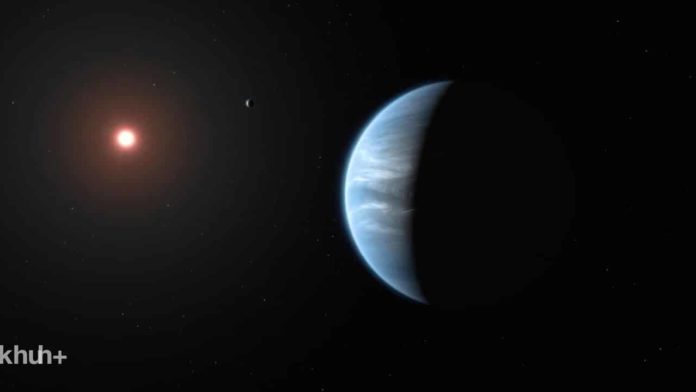The exoplanet named K2-18b situated 124 light-years away and has 2.6 times the radius of Earth has rainclouds in its atmosphere and could have habitable conditions at its surface. Discovered by the exoplanet-hunting Kepler telescope in 2015, it orbits a red dwarf star about 110 light-years away; the findings were published in a report recently. This report by researchers provides definitive proof of the existence of clouds of liquid water in the planet’s hydrogen-rich atmosphere, which is considered uncommon for a planet of such a small size.

The exoplanet is about two and a half times larger than Earth and is situated in the habitable zone of its star, which means that liquid water could theoretically exist on the surface. The nature of the surface itself is unknown. The surface could be anything from a rocky exterior with a thin atmosphere, much like Earth, or a dense hydrogen atmosphere above a high-pressure water-ammonia ocean and metallic core, like Neptune. If it turns out to be the second case, researchers will have to abandon hope of finding life on the planet.
Even the rain on this exoplanet could be bizarre. Researchers think that the water droplets might never actually hit solid ground. Instead, they would reach a point in the exoplanet’s thick atmosphere where the pressure and temperature are so great that the droplets would evaporate. Then the water would rise in the atmosphere again, condense into clouds, and rain back down. Something akin to a small water cycle.

Researchers exclaim that it is a mysterious kind of planet that is one of the most common kinds found in our galaxy. We do not know the actual nature of its surface and much about its atmosphere. Life could potentially be found on such an exoplanet, but the chances are slim to none.
Further Reading:


